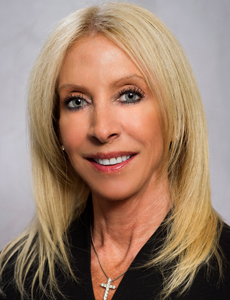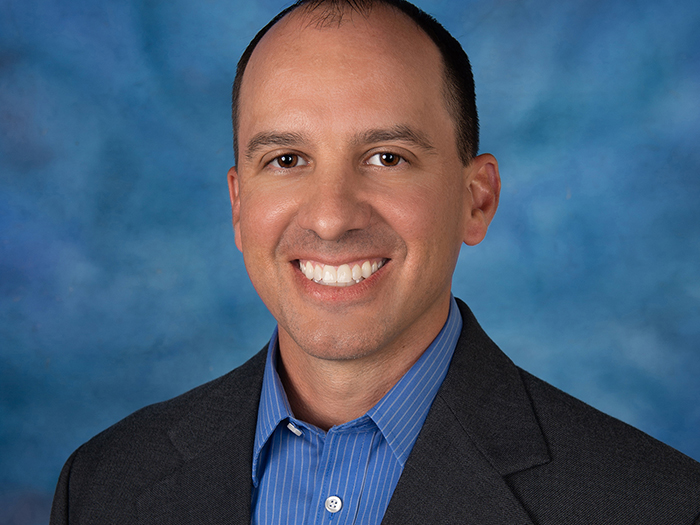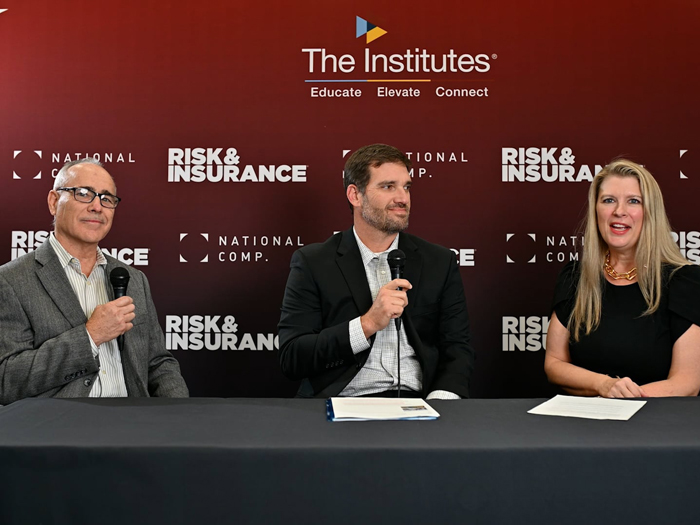We Surveyed 669 Workers’ Comp Pros About Their Critical Challenges for 2020. Here Are the Top 10

For the second year running, Risk & Insurance®, sponsored by Healthesystems, canvassed attendees of the National Workers’ Compensation and Disability Conference© & Expo to determine what trends and challenges they’re focused on for the year ahead.
A total of 669 people responded, representing every corner of the workers’ comp industry — TPAs, PBMs, hospitals and other medical providers, employers, insurers, brokers and regulatory authorities.
Some of their top concerns remained consistent with last year’s findings — rising cost of care and claim complexity, for example — but other concerns made a conspicuous jump to the top of the list.
According to the survey results, here are the top 10 challenges workers’ comp professionals expect to contend with in 2020:
1) Changing Workforce Demographics
The top concern among workers’ comp professionals was changing workforce demographics — primarily, the rising average age of the American employee.
Seventy percent of survey respondents said that the aging workforce will make a big or very big impact on their workers’ compensation program next year.
According to the Bureau of Labor Statistics, more adults over age 55 are staying in the labor force longer. By 2026, participation on the workforce will increase among all Americans above retirement age.
That poses several challenges from a workers’ comp perspective.
For one thing, older workers are more prone to some injuries. For another, they are more likely to present with comorbidities, making their injuries more difficult, time-consuming and costly to treat.

Dr. Robert Goldberg, chief medical officer, Healthesystems
“The high incidence of chronic conditions among Americans aged 50 and over makes it more likely that these patients will experience complications and lengthier recovery times,” said Dr. Robert Goldberg, chief medical officer, Healthesystems.
“It’s important to note, however, that people of all ages suffer from chronic conditions, and it is the presence of comorbidities that increases risk, rather than age itself.”
Younger workers, however, are also introducing complex risks into the mix. Forty-one percent of respondents said younger workers will make a significant impact on their workers’ comp program.
Mental health is a larger concern among this demographic, and the entrance of a new generation into the workforce is driving up concern over mental health exposures overall.
“The increase in psychosocial issues that complicate a workers’ comp claim has been on the rise over recent years, with my employer seeing a profound uptick in this particularly among our under 30-year-olds,” said Caryl Russo, senior vice president, Corporate Care, RWJBarnabas Health.
2) Comorbidities and Poor Worker Health
Sixty-two percent of survey respondents placed comorbidities and poor worker health in their top five concerns for 2020.
Treatment of simple injuries can be hampered by the presence of conditions like obesity, diabetes, hypertension and chronic pain, among others.
One-third of American adults are obese. According to the American Diabetes Association, at least 9.4% of Americans have diabetes. About 20% report having chronic pain, and studies have shown the cost of care to be about three times higher for these patients.
When pharmacy is involved, drug safety and efficacy can be impacted by preexisting conditions and their accompanying medication regimens. The risk of adverse interactions increases. Physical therapy might also prove difficult for people who have limited mobility or difficulty exercising.
Having multiple health conditions delays recovery and is a recipe for depression and anxiety.
“The presence of one or more comorbidities — at any age — is a red flag for potential drug interactions and adherence issues that can complicate treatment,” said Dr. Goldberg. “Medication management is always important and even more so for patients with comorbidities.”
All of these issues are more ubiquitous among older workers. Among adults over 65, for example, the prevalence of diabetes is closer to 25%.
“The significant increase in employee obesity and decreased muscle health have contributed to the increase in both frequency and severity of injuries,” said Russo.
“This trend has been observed over the past decade with the average worker being 10-12 pounds heavier and nearly 13% weaker in muscle strength. This has compounded the nature of injuries, the occurrence of injuries and the slower recovery. When combined with an aging workforce, the risk is increasing exponentially,” Russo said.
3) Increasing Claim Complexity
In last year’s survey, the growth of complex claims made an appearance in respondents’ top five challenges, but results show that concern over this trend is strengthening.
This year, 65% of respondents ranked this as one of their top challenges for 2020, just behind an aging workforce.

Caryl Russo, senior vice president, Corporate Care, RWJBarnabas Health
Claims complexity is a summary of all the individual challenges that keep workers’ comp professionals up at night.
Factors that create complex cases include worker age, comorbidities both physical and mental, high cost of care, substance dependence and abuse, and ineffective clinical decision making.
Poor decisions may result from lack of adherence to evidence-based guidelines or lack of alignment around a treatment plan.
Some or all of these issues can converge to send a seemingly simple claim off the rails, but case manager workload is part of the problem, too.
Many claims professionals simply don’t have the time or resources to check in on cases as frequently as they should or to examine alternative treatment plans. Getting complex cases back on track will require more investment in proactive claim management that brings medical professionals, adjusters and case managers together at one table.
4) Mental Health Exposures
Consideration of mental health has previously been restricted to post-traumatic stress disorder (PTSD) in first responders, but more states are acknowledging “mental-only” injuries as compensable.
According to a 2018 report by NCCI, at least 16 states have considered legislation expanding coverage for mental-only injuries, including but not limited to PTSD.
It is still difficult, however, for employees to file claims purely related to work-related stress because the burden of proof is high.
They must prove that the stress they experienced was out of the ordinary and that they suffered demonstrable harm because of it.
“It’s interesting to note that claims managers and medical program managers ranked mental health concerns more highly than other survey responders,” Dr. Goldberg noted.
“That could mean that they are seeing more mental health issues among their claims populations, which might be expected since reported symptoms of anxiety, stress and depression have been increasing over the past several decades.”
But even if the claim isn’t directly related to a mental health condition, it’s indisputable that emotional stress, depression and anxiety not only increase the likelihood of physical injury but also inhibit a full and quick recovery.
“The approach I have implemented and seen mirrored by other large employers has been to carefully identify neuropsychologists who can provide in-depth testing to determine the extent of the condition and to provide an assessment of causality,” Russo said.
“Although this is a more expensive approach, my experience has been that it is a resource well utilized, and it enables us to get employees to the right level of care — whether through comp or personal health insurance — much quicker.”
5) Regulatory and Legislative Changes
As always, staying current on workers’ comp legislation is a moving target. According to the NCCI, there were nearly 700 state and federal workers’ comp bills introduced in 2019, 84 of which had been passed in the first half of the year.
Most of them had to do with fee schedules and treatment guidelines meant to optimize quality of care while containing cost. Another trend, however, has seen the broadening of employee rights, allowing them to sue employers over their injuries or for a lack of compliance with paid leave regulations.

Monica Manske, senior manager of workers’ compensation and employee safety at Rochester Regional Health
“Most concerning is not a concern but a recognition of additional complexity is the increasing number of paid and unpaid family leave programs,” said Monica Manske, senior manager of workers’ compensation and employee safety at Rochester Regional Health
“The increase in opportunity for leave provides a greater work-life balance, certainly responds to concerns with a larger aging population, which are all the right thing to do. From an operational perspective it provides additional complexity in how you manage your leave programs,” she said.
6) Opioids and Substance Abuse
Though opioids still rank as a top challenge for 2020, concern over the addictive painkiller has waned slightly.
Opioids are still prevalent and problematic, but greater awareness of their deleterious long-term effects has helped to curb prescribing in the workers’ compensation industry.
“We have made progress in limiting opioid use in workers’ comp,” confirmed Dr. Goldberg.
“But there is still a great deal of opportunity for further improvement, and we must remain vigilant. There are other medication classes that are increasing in use to treat pain, such as NSAIDs and anticonvulsants, which are not addictive like opioids but do carry their own risks and potential side effects.”
A drug utilization study from California showed that NSAIDs have surpassed opioids as the most commonly prescribed pain medication for injured workers.
According to Manske, however, opioids will likely never stop being a challenge, because they still have a place in the care plans of seriously injured workers.
“The industry has a better handle on opioid use. States are now installing treatment guidelines related to opioid use, there are more checks and balances in the workers’ comp system, the insurance carriers and TPAs have pharmacy consults, PBMs have greater infrastructure,” she said.
“What I do not want to lose sight of in all of the checks and balances related to prescribing opioids is the patient — the employee who has had an injury. What is the best plan of care for them?”
7) Soaring Drug Prices
The sky-high cost of prescription medication is nothing new, and pharmacy remains a top driver of overall claim costs.
The Journal of the American Medical Association reported that, in 2018, three-quarters of the top-selling brand name drugs had increased in cost by more than 50%, and nearly half had doubled in price.
The workers’ compensation industry has been able to combat this trend by reining in utilization and taking advantage of generic alternatives. According to a 2018 report the NCCI, pharmacy costs as a share of total medical spend have remained stable, hovering around 13.7%.
Nonetheless, 26% of respondents said prescription drug costs were the medical cost component they were most focused on for 2020.
The only cost driver demanding more attention was hospital costs.
The development of new medications, unpredictable fluctuation in market value, and a general lack of transparency in drug pricing all make this challenge an ongoing one.
8) New and Expensive Medical Treatments
Advances in medical treatment often promise safer, more efficient and less invasive ways to help patients get better, but it takes time to prove these assertions true. The unconfirmed potential of new treatments and medications also comes with an increased risk of failure, which translates to wasted time and money.

Patti Colwell, workers’ compensation program manager, Southwest Airlines
“Medical technology continues to advance quickly and often turns out attractive new modalities that hold promise; however, the science to determine what is evidence-based treatment takes longer. Accordingly, payers and injured workers need to be patient and not jump quickly at the next great shiny technology that hits the marketplace,“ Dr. Goldberg said.
Fifty-six percent of survey respondents agreed with the statement “medical advances and new treatments present new opportunities for fraud, waste and abuse.”
Reliance on evidence-based guidelines and utilization review can help to minimize these risks, but they are likely to be become more challenging as technology enables the rapid emergence of new treatment modalities.
Increasing cost of care complicates the matter. According to The Center for Medicare and Medicaid Services, health care costs have increased from 5% of the GDP in 1960 to 18% in 2017 and will likely represent 19% of the GDP in 2027.
By that time, annual costs will break down to about $17,000 per person.
Employers and adjusters will be faced with difficult decisions as they struggle to balance the quality and cost of care.
“New medications coming down the pipeline are often a cause for concern since they are often extremely expensive,” said Patti Colwell, workers’ compensation program manager, Southwest.
“That said, if a specific medication or other treatment can enable an injured worker to resume prior lifestyle, improve quality of life or enable an injured worker to recover/rehab more quickly, it should be evaluated no matter what the cost,” Colwell said.
“I believe it will be incumbent upon TPAs and self-insured employers to curb rising costs by contracting directly with care providers and negotiating bundled fees, which will help to control administrative costs, medical review, and oversight,” Russo said.
9) Cyber Security and Protection of Private Data
Technology is reshaping the way that providers deliver care and the way that the industry manages claims.
More providers and insurers are interested in telemedicine as a way to deliver quality care while increasing efficiency. For injured workers, attending medical appointments from the comfort of home eliminates transportation barriers and reduces the frequency of missed appointments.
These platforms also help administrators collect data.
Data-driven predictive analytics are playing a bigger role in clinical decision making and claim management. Nearly all TPAs and PBMs are using a predictive analytics platform to help prioritize and flag high-risk claims.
Automated claims processing solutions have also been identified as an emergent tool in workers’ compensation. These help adjusters better allocate their time for high- and low-risk claims, respectively.
All of these tools, though, offer hackers another entry point to private claim information. The more technology is brought to bear, the more cyber risk increases. A breach of claims data can result in steep fines for HIPAA violations, reputational damage and, at worst, interruptions in care for injured workers.
“Cyber risk is a fact of life now in every venue of our lives; medicine is no exception but with more serious consequences,” Russo said.
10) Medical marijuana
Medical marijuana is legal in at least 33 states, and it’s likely the remaining states will join them sooner rather than later.
More than half of survey respondents (57%) think medical marijuana will be covered by workers’ compensation insurance in more states over the next two to five years.
Cannabis has been touted as a safe, less addictive pain treatment and as a way to fight the scourge of opioids.
But weed in the workplace also presents its own safety risks. Especially in sectors like construction and manufacturing, where impaired workers operating heavy machinery could cause severe injury or death. Yet, employers in states with legalized weed have been met with legal challenges over the use of impairment testing.
“We need more research regarding medical marijuana,” said Dr. Goldberg.
“There is some clinical evidence that cannabinoids are effective in treating pain and that products with low amounts of THC may offer clinical benefit without euphoric effects. But more clinically valid studies are needed to determine efficacy, safety and proper dosing.”
Though the industry is seeing more requests for reimbursement for medical marijuana, there remain many myths and misconceptions about its safety and efficacy. The variance in state regulations also makes it difficult for employers spanning multiple regions to form a consistent approach.
Only time will tell how all of these challenges take shape in 2020, but all are likely to remain topics of discussion at this year’s NWCDC. &










